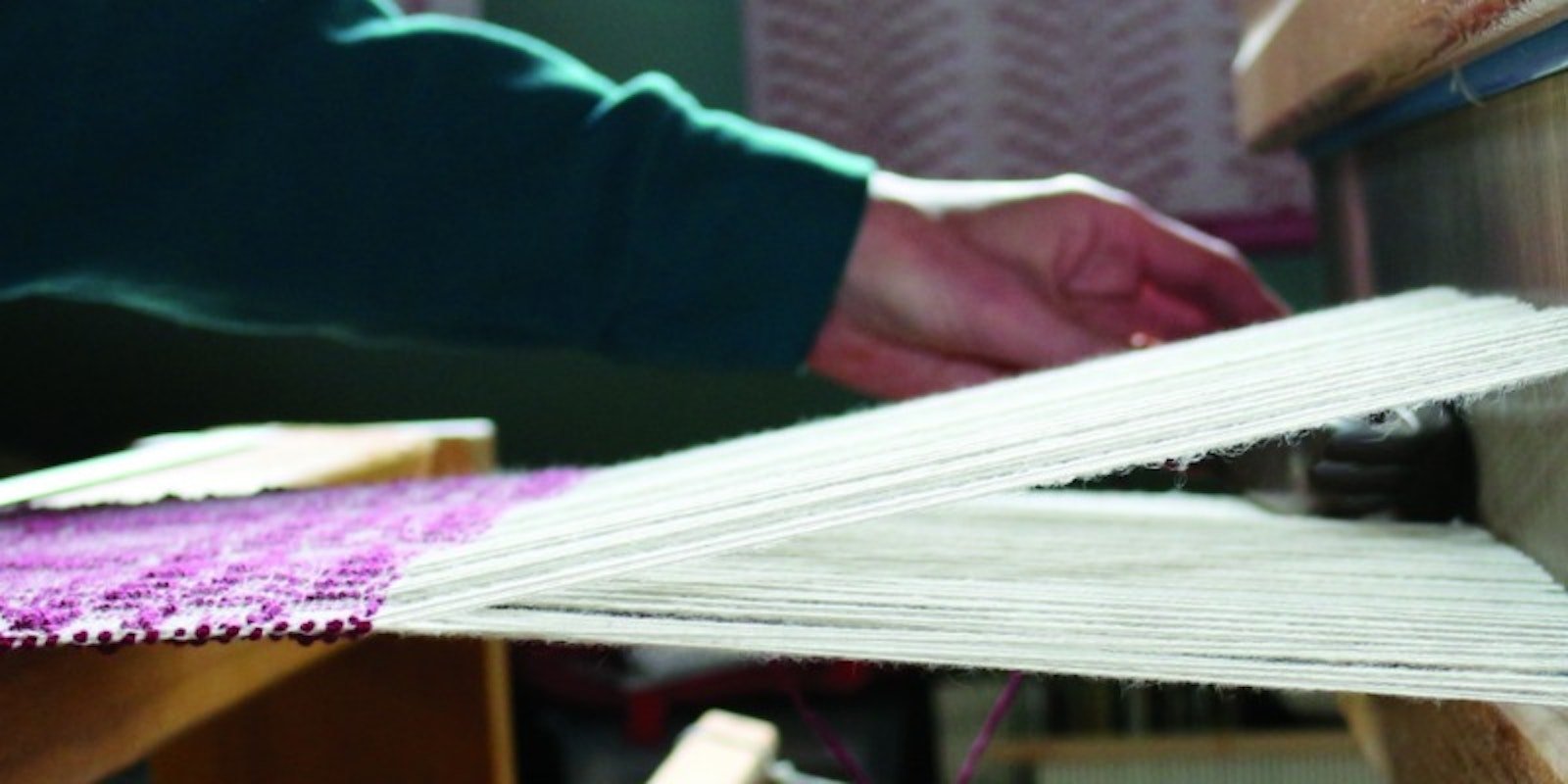*A clean shed while weaving is vital to a happy weaving experience. Any misbehaving threads can lead to unintentional floats that will need to be fixed. If your shed is suffering Deb Essen has a few fixes that might help. Here are just a few and you can find the rest in the May/June 2017 issue of *Handwoven.
—Christina
Why is the opening between the layers of warp called a “shed”? As a noun, a shed is a storage space. As a verb, it means “to separate or part.” In weaving, both definitions make sense: we separate the warp threads to make an opening to store the weft. (If any of you weaving historians know the definitive answer, please write Handwoven. Inquiring minds want to know!)
A perfect weaving shed separates the warp threads into two perfectly flat layers. But sometimes independent warp threads won’t line up. Then our shuttle catches those wild warps, patterns weave incorrectly, and frustration (with possible tantrums) generally ensues. There are several reasons why those wild warps happen. If we want sweet weaving, we need to learn to find the causes and fix those wild threads. So here I present some of the most common causes of messy sheds and how to fix them.
SHED LOOKS LIKE A FUN HOUSE STAIRCASE
Depending on your loom’s manufacturer and the age of your loom, your heddles may be attached to a heddle bar within the harness with hooks or spring clips in the middle of the upper and lower heddle bars. If you have these heddle-bar holders on your loom, first check that you have reattached the heddle-bar holders on all shafts. You will never get a clean shed if any of the bar holders are unattached.
If a bunch of individual warp threads won’t line up with the rest in their group right from the get-go, you likely have uneven warp thread tension. It could be that warp threads within the individual tie-up bundles are not evenly tensioned. Check the bundles. If that’s the problem, you need to untie from your front apron rod, pull out the slack to even up all the warp threads in the bundle, then retie to the apron rod.
The other possibility is that you didn’t separate the layers of warp as you beamed them. Without separation, as you tighten the tension, some warp threads will dig down into lower layers of threads, creating uneven tension. Warp sticks, rolled cardboard, or paper wound between all layers of the warp will solve the problem. In her video The Efficient Weaver, Laura Fry uses a bamboo blind instead of paper. It’s brilliant! It’s easy to wind on with the warp, and as you weave, the bamboo blind falls in a tidy mound on the floor. Love it!
Deb Essen

